Related Research Articles

Stremonius or Saint Austremonius or Saint Stramonius or Austromoine, the "apostle of Auvergne," was the first Bishop of Clermont. He is venerated as a saint in the Catholic Church.

Louis Antoine de Noailles, Cardinal de Noailles, second son of Anne de Noailles, 1st Duke of Noailles, was a French bishop and cardinal. His signing of the Unigenitus bull in 1728 would end the formal Jansenist controversy.

Gregory of Utrecht was born of a noble family at Trier. He became a follower of Saint Boniface, who sent him to study at the Monastery of Saint Michael at Ohrdruf. He then accompanied Boniface on his missionary journeys. In 750, Boniface appointed Gregory abbot of St. Martin's Monastery in Utrecht. St. Martin's became a centre of learning and missionary activity. When, in 754, Eoban left to accompany Boniface on their last missionary trip, Gregory was tasked with administering the diocese of Utrecht, which he did faithfully for the next twenty-three years until his death in 776.
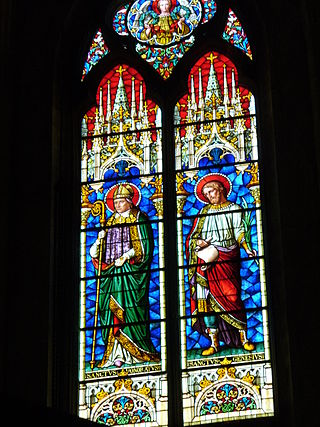
Genesius of Arles was a notary martyred under Maximianus in 303 or 308. He is honoured in the Catholic Church as the patron saint of notaries and secretaries, and invoked against chilblains and scurf. His feast day is celebrated on August 25.

Saint Genesius is a French saint. He was the twenty-first Bishop of Clermont and his feast day is celebrated on June 3.
Saint Aldric was Bishop of Le Mans in the time of Louis the Pious.
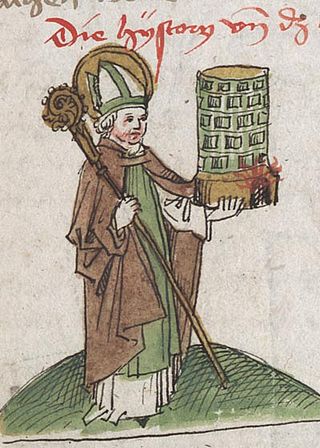
Epimachus of Alexandria was a Roman martyr who died in 250 during the Decian persecution. He and his companions—Alexander, Ammonarion, Mercuria, Dionysia and other women—were beheaded at Alexandria. They are commemorated on 12 December.

Perpetuus was the sixth Bishop of Tours, serving from 460 to 490.
Andrew the Scot was the Irish-born student and assistant of Donatus of Fiesole. He served as archdeacon of Fiesole under Bishop Donatus.

Symphorian, Timotheus (Timothy), and Hippolytus of Rome are three Christian martyrs who, though they were unrelated and were killed in different places and at different times, shared a common feast day in the General Roman Calendar from at least the 1568 Tridentine calendar to the Mysterii Paschalis. While still a young man, Symphorian was either beheaded or beaten to death with clubs.
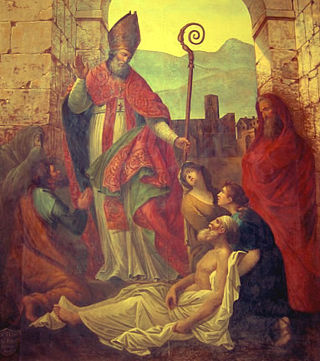
Saint Fulcran was a French saint. He was bishop of Lodève.
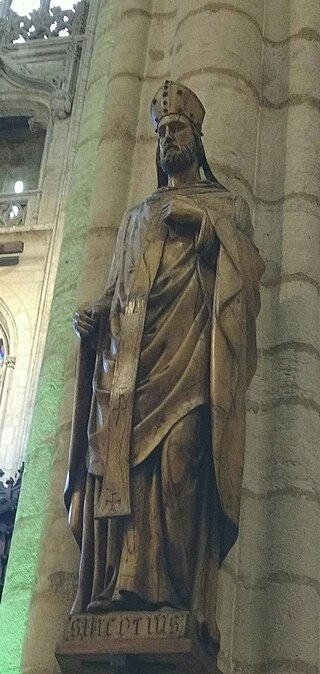
Saint Nicetius was Archbishop of Lyon, then Lugdunum, France, during the 6th century. He served from 552 or 553. He is venerated as a saint in the Catholic Church.
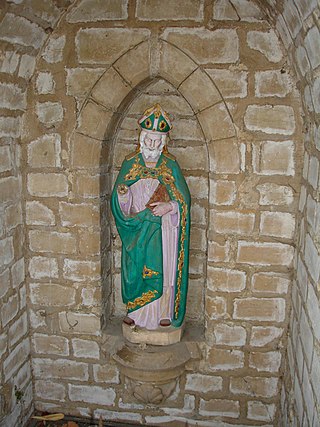
Praejectus, Prejectus or Projectus (625–676) was a bishop of Clermont, who was killed together with the abbot Amarinus as a result of political struggles of the day.
Saint Gal of Clermont was the sixteenth Bishop of Clermont, holding that see from 527 to 551. He shares a name with a later bishop of the diocese, who, though less illustrious than the first Gal, is also revered as a saint. Gal played an important role in the politics of the Church, as the Council of Clermont (535) was hosted under his episcopate. He was the uncle and teacher of Gregory of Tours.
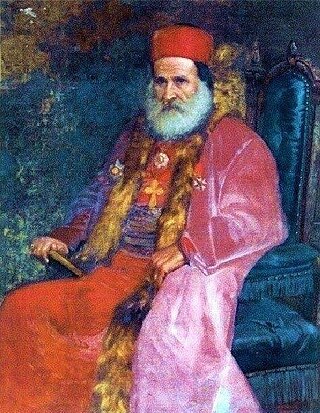
The Bishops-Assistant at the Pontifical Throne were ecclesiastical titles in the Roman Catholic Church. It designated prelates belonging to the Papal Chapel, who stood near the throne of the Pope at solemn functions. They ranked immediately below the College of Cardinals and were also Counts of the Apostolic Palace. Assistants at the Pontifical Throne, unless specifically exempted, immediately enter the Papal nobility as Counts of Rome.
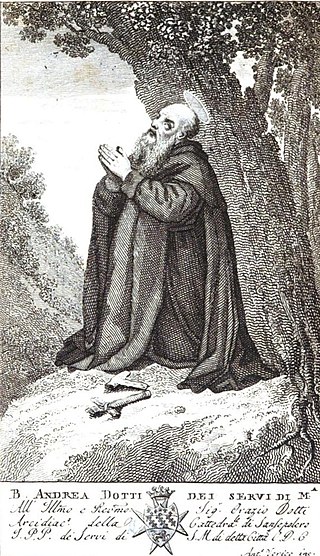
Andrea Dotti was an Italian Servite preacher. His feast day is September 3.
Confessor of the Faith is a title given by some Christian denominations. In Catholicism and Eastern Orthodoxy, Christians who professed their faith in times of Christian persecution and therefore had to suffer persecution, expulsion, torture, mutilation and imprisonment, but not directly undergo martyrdom, are called confessors. Later, popes, bishops, abbots, kings and hermits were also counted among the confessors.
Saint Genesius of Lyon was the 37th Archbishop of Lyon.
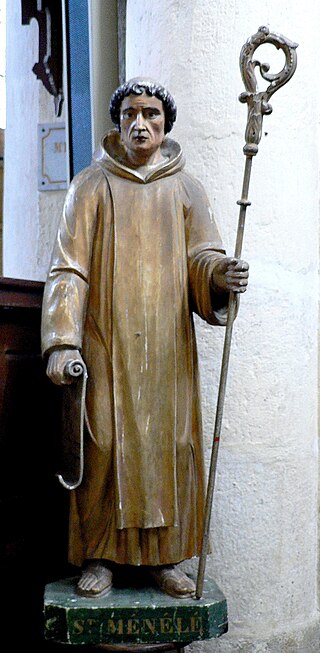
Saint Meneleus was a French monk who founded the Menat Abbey.
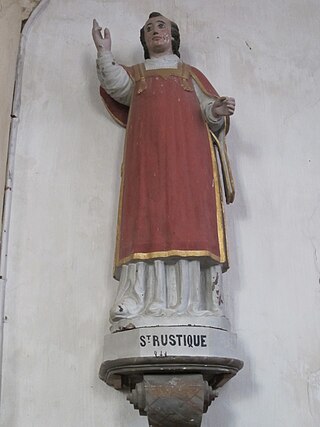
Rusticus of Clermont was a Bishop of Clermont in Auvergne. His feast day is 24 September.
References
- ↑ Holweck, Frederick George. A Biographical Dictionary of the Saints vol.1, B. Herder Book Company, 1924, p. 419
- ↑ Transformations of Romanness: Early Medieval Regions and Identities (Walter Pohl et al, eds.) GmbH & Co KG, 2018, no pagination ISBN 9783110597561
- ↑ Mershman, Francis. "Genesius." The Catholic Encyclopedia Vol. 6. New York: Robert Appleton Company, 1909. 7 October 2021
 This article incorporates text from this source, which is in the public domain .
This article incorporates text from this source, which is in the public domain . - ↑ "Saint Genesius, County of Clermont". New Catholic Dictionary CatholicSaints.Info. 21 May 2013
- ↑ "Martyrdom of Praeiectus", The Cult of the Saints, University of Oxford
- ↑ Butler, Alban. "St. Projectus, Bishop of Clermont", The Lives of the Saints. 1866
- Attribution
 This article incorporates text from a publication now in the public domain : Herbermann, Charles, ed. (1913). "Genesius". Catholic Encyclopedia . New York: Robert Appleton Company.
This article incorporates text from a publication now in the public domain : Herbermann, Charles, ed. (1913). "Genesius". Catholic Encyclopedia . New York: Robert Appleton Company.